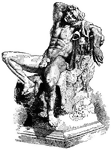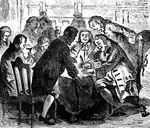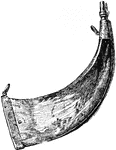Clipart tagged: ‘drunk’

The Barberini Faun, or Drunken Satyr
Illustration of the life-size marble statue located in Munich, Germany. It was found in 1620 in a moat…

Silenus - Marble Sculpture
"In Greek mythology, a divinity of Asiatic origin, the foster-father of Bacchus, and leader of the satyrs,…

Sloughter Signing the Death-Warrant
Colonel Sloughter signing the order to execute two rebels. According to popular lore, Sloughter was…

